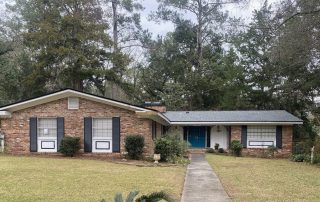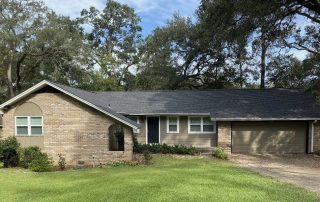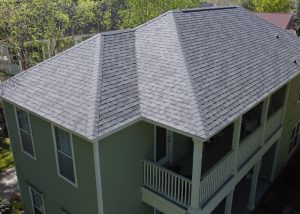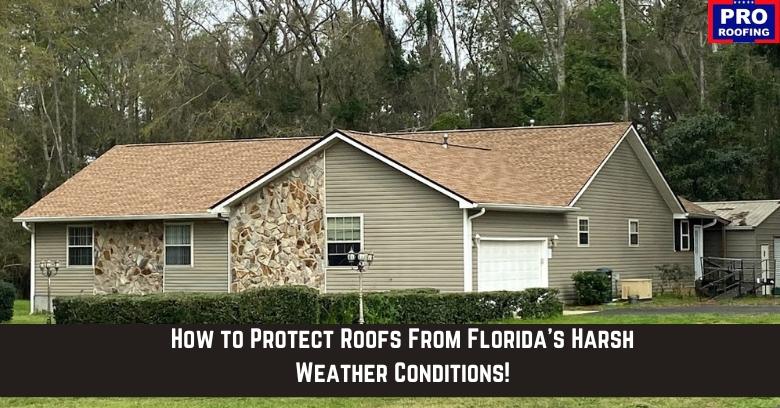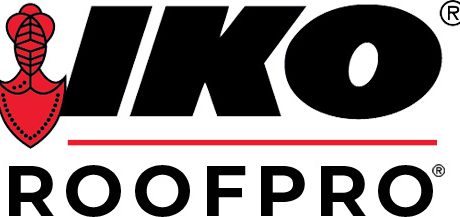If you can’t find the answer to your question please fee free to call us.

– Insufficient number of base-flashing plies.
– Improper base-flashing height. – Insufficient protective coating, resulting in accelerated weathering and deterioration. – Omission of cant strips, making the base flashing more susceptible to damage.
– Open vertical end laps or seams caused by insufficient sealing.
– Insufficient adhesion or movement between vertical surfaces and the roof deck, resulting in separation of base flashings from vertical surfaces. – Loose insulation, causing base flashings to separate from vertical surfaces.
– Improper fastening of base flashings to walls or curbs, resulting in sagging or separation of the flashing from the vertical surface. – Deteriorating substrates, causing base flashings to separate from the surface, or permitting water to enter behind base flashings.
If the roofer isn’t insured, you could be held liable for medical expenses from injuries that may occur to the workers on your property. The contractor’s license should also be in good standing for your municipality.
Warning Signs that a Roof needs to be Replaced
How old is the roof on your house? Is it time to replace it? Arguably, all homeowners know that the roof is a critical part of the house and needs to be maintained. However, it is often overlooked and as time goes by, whether it is maintained or not, age will take its toll and it will need to be replaced.
Age is certainly a factor to consider when deciding if a roof needs to be replaced. Generally speaking, a roof will last about 20-25 years. There are other potential signs that can help you determine if you will need to replace the roof:
Start your inspection inside:
Light coming through the roof boards: Go into the attic and before turning on a light, determine if any light is coming through any cracks or hole. If this is happening, then water is also getting in and that’s a problem.
Check Insulation: Soggy insulation could be a sign that there is a leak in the roof.
Critters have taken up residence in the attic: The thought of this can make almost anyone squirm, but it is an indication that the roof has a missing or rotting section and needs attention.
Leaks: Look at the walls and ceilings and see if there are brown spots, stains, or any obvious signs of water damage.
Outside Roof Inspection:
Some indicators that a roof needs to be replaced can be detected without going on the roof. Some require getting on the roof. Whether you do this yourself or hire a professional the following signs may indicate that the roof needs to be replaced:
General Appearance: This can include cracked shingles, missing granules which result in bald spots, shingle edges curling, and damaged flashing.
Missing Shingles: This can be the result of a strong storm, improper installation, or even age.
Dark Streaks: These streaks are caused by algae growth and are very common in humid climates. In many cases, it can be washed off, but it can also harm the roof.
Next Steps
Document any damage and questionable areas. Taking pictures can also help with this. Then contact the professionals at Parker Roofing Options in Tallahassee at (850) 695-9679 or filling out the online form. We look forward to working with you to establish the best course of action in terms of servicing your roof. We provide residential and commercial roofing services, including roofing repairs throughout North Florida and South Georgia.
A roof’s drainage system includes the gutters, leaders, drain openings and scuppers, as well as the slope provided by the structural deck, tapered insulation, crickets and sumps. The primary function of the drainage systems is to prevent the retention of water on the roof by removing water from the roof as quickly as possible. Every roof, including so-called “dead-level” roofs, must have some provision for drainage. Further, it is important that the drainage system be kept free from debris that might interfere with the proper flow of surface water.
Many roof problems can be traced directly to inadequately designed or improperly installed drainage systems; for example, the use of only one drain; the failure to install overflow scuppers in parapet walls; the placement of drains next to support columns instead of at points of maximum deflection; loose or missing drain clamping rings. Ponded water is the principal indication of inadequate drainage, and may indicate the presence of structural defects.
The function of flashings is to provide a watertight junction between roofing materials and roof projections or other parts of the structure, and between roof sections. Flashings should be designed to furnish service for at least as long as the materials used in the field of the roof. Flashings are the most vulnerable part of any roof. Their importance and the importance of maintaining them properly cannot be overemphasized.
Many early roof problems are actually flashing problems. Often, repairing the flashings or providing new flashings is all that is needed to make the roof watertight again. Most flashing problems result from inadequate flashing design or faulty construction. Many flashing problems can be reduced or eliminated by careful examination by competent inspectors during roof installation, and by regularly scheduled inspection and maintenance.
In many instances, leaks occur at flashings where there are no flashing defects. These leaks may be the result of open joints in a masonry wall or coping cap, which permits water to enter behind the flashings and into the building. This problem may be eliminated by “through-wall” flashings.
The primary function of gravel stops (for aggregate-surfaced roofs) and metal roof edge strips (for smooth-surface roofs) is to close off the edges of the roof to prevent wind damage or blow-offs. Another important function of gravel stops is to prevent the loss of aggregate surfacing near the edge of the roof.
The principal problems with gravel stops and metal edge strips are leakage through open or broken joints between metal pieces, and splitting of the stripping felts at metal edges. For these reasons, gravel stops and metal edge strips should be raised out the water line whenever possible by using raised wood nailers and tapered edge strips. The use of interior drainage is preferred. However, where water must drain over the metal edge, scupper cutouts are preferable to continuous edge drainage.
There is no one roof system that is best for all applications. Keep in mind that even if the best materials are used, the roof can still leak if it is installed improperly. Good workmanship and proper attention to detail are just as important as material selection.
The following may indicate that your roof needs replacing:
- Missing, cracked or curling shingles
- Blistering or peeling paint Shingle,
- Sheathing or siding decay
- Leakage in the attic after heavy rains
- Stains on interior walls or ceilings
- Rotten fascia or soffit
- Chimney leaks
On average, it takes two to three days . The exceptions are roofs that are larger than average, roofs that need extensive structural repairs, or roofs that require specialty materials. We arrive on each job site with the manpower, expertise and materials to complete the job in a timely manner. However we will never compromise quality to complete a job more quickly. Commercial roofs do not have an average time frame due to many varying and complex requirements for commercial buildings. We’ll give you an expected time frame for completion as part of our written proposal.
The cost of your roof will depend on its size, shape, slope and the type of material you choose to install. Different roofing materials provide different levels of protection and service life.
Depending on if you are removing your existing roof, and what it is you are removing metal roofing can be as much as double the cost of a mid-grade asphalt composite. The reason for this is that the materials themselves are typically about twice as much, and the installation of a metal roof can be 3-4 times longer than asphalt composite.
Listen for specific measures that are taken to ensure worker safety (harnesses, heavy equipment, etc.). Don’t settle for a vague statement like, “Well, they try not to fall off the roof!”
Troublesome and costly roofing problems are often the result of faulty initial design of the roof system. Design deficiencies are costly to correct, and usually can only be corrected during roof replacement. However, unless design deficiencies are discovered and corrected during roof repair or re-roofing, the problems relating to them most likely will recur. Some examples of faulty design are:
- Weak roof structures that deflect excessively under load, causing splitting of the roof membrane.
- Inadequate roof slope, sagging roof structure, or insufficient number or location of drains, resulting in ponding water.
- Inadequate provision for expansion and contraction at changes in deck material or direction, causing membrane splits.
- Incompatible roof materials - i.e. the use of asphalt to adhere a torch-on material (APP).Make sure the roofer agrees to clean up all shingle pieces, wood remnants, and other assorted debris before he departs. That’s part of what you’re paying them for.
The failure to find and correct minor roof deterioration in the earliest stages is probably the greatest cause of premature roof problems. This is particularly true of roofing materials applied on relatively low-sloped roofs.
The use of metal base flashings in the construction of built-up roofs is not recommended. Metal base flashings easily separate from bituminous materials and stripping felts crack at the edge of the metal because of the difference in expansion coefficients between the materials. Open joints between metal pieces and deterioration of the metal are also sources for water entry. Inside and outside corners are particularly vulnerable areas. For these reasons, metal base flashings should be replaced with bituminous base flashings whenever possible.
– Counter flashings located too high above the base flashing. – Metal deterioration caused by a lack or loss of protective coating. – Cracks and open joints between metal pieces. – The separation of counter flashings from vertical surfaces. – Reglets not being sealed. – Counter flashings not tightly fit to base flashings.
Penetrations through the built-up roof membrane are usually flashed in one of two ways. Individual pipes and small vents usually use flat, metal flange flashings that are placed directly on the last ply of roofing material and are stripped in with felts and mastic or felts and bitumen.
Larger penetrations and groups of smaller penetrations usually use curbs constructed of wood, metal or concrete, flashed with bituminous base flashing and metal counter flashings.
Common penetration flashing problems are:
- The failure to properly design the flashing for the penetration.
- Open or broken seams in metal curbs caused by expansion and contraction.
- Standing water behind penetration curbs caused by the omission of crickets.
- Sagging or separating base flashings caused by omission of top wood nailers.
- Missing or deteriorated counter flashing.
- Splitting or separation of the felt stripping over the edge of metal flanges.
- Improper priming and stripping of metal surfaces.
- Fastener backout and separation of the metal flashing flange from the roof around penetration flashings.
- Movement between stack vents or pipes and the flashing.Problems with Rooftop Equipment, Signs, Braces and Supports
Often, the rooftop is used as a platform for all types of mechanical equipment, ladder struts, antennas, flag poles, signs, bracing, etc. These items should not be placed on the rooftop except when absolutely necessary. They should never be mounted or placed directly to the top of the roof membrane, as leaks beneath or adjacent to the supports for this equipment are impossible to repair. Rather, they should be mounted to a support structure or to raised curb-type supports. Flat flange or curb flashings can then be used to keep the roof watertight, and roof replacement and recovering can be done without disturbing or removing the equipment. Pitch pans, however, should not be used to keep supports watertight, and should be avoided where possible. Refer to the ARI/NRCA/SMACNA Guidelines for Roof-Mounted Outdoor Air- Conditioner Installations, and the roof membrane manufacturer for recommendations concerning the proper mounting and flashing of these items
It is permissible to install a roof over the top of an existing roof. By doing so the current owner of the building can save some money on the roofing project. However, roofing over another roof does not provide the same quality of roof, or offer the same level of security that a roof system installed when a complete removal was performed. This is where people say, “Building code, and manufacturers allow it. It must be all right.”
Let’s look how the code officials, and manufacturers look at roof over jobs. When installing asphalt composite shingles most Building Codes allow for up to 2 layers of asphalt roofing on a structure. The code has nothing to do with shingle performance. It is written in regards to the structural integrity of building, and how much weight it can handle. Manufacturers also prohibit roofing over an old roof. However if you read the fine print of any roofing manufacturer’s warranty you will find verbiage in their warranty exclusions that say “We will not warrant product failure if roof is installed over a substrate that is not smooth, flat, and clean.” This means that if anything under the roof causes the roof on top to fail, there is no warranty.
Other concerns about roofing over the top of a roof system are: There is no way to do a thorough roof deck inspection when it is covered by old roofing. This could result in damage being concealed. It is much more difficult to flash a second layer. If the second layer leaks the water can ride the layer underneath and travel to a different area of the roof. This makes leak detection and correction very difficult. Shingles are made from Asphalt. The flexibility of Asphalt comes from the natural solvents within it. A second layer can be super-heated in summer months which can cause the shingle to buckle and curl prematurely. Removal costs in the future will be tremendous due to the extra labor, and escalating landfill rates.
We believe that roofs should be removed so the property can be totally inspected, and any damage can be repaired before a new roof system is applied. If you are considering re-roofing, and are not sure of what your options are contact us for your free inspection.
Ask what forms of payment the contractor accepts. More importantly, inquire about any deposits that are necessary. Any deposit shouldn’t be more than about 10% of the total estimate, or be paid until the materials arrive at the work site.
Roofing materials will come with product warranties. But you should also inquire about whether the contractor guarantees the labor and installation itself. Reputable roofers will stand behind their work with a labor warranty.
Protect Your Roof from Sun Damage Now that summer is upon us, get ready to feel the heat!
However, not many people know that the hot sun can cause a lot of damage to your existing roof. In order to keep your home in tip-top shape, here are some tips on how to take care of your roof during these warm months.
Make sure to check and clean all gutters and downspouts so that water can flow through without blockage. If you have a skylight, don’t forget to check for clutter behind it.
Check your roof for cracking shingles, or shingles that are missing. Checks your fans to make sure they are working properly. While on your roof, make sure to take pictures of before and after to make sure there aren’t any major changes since your last check.
Mold damage happens fast. Make sure that nothing is moldy or damaged from mold, and if there is mold damage, call the PROs right away to make quick repairs.
Block all the places where small creatures can invade. Check sealants to make sure they are still in good shape. Make sure your eaves and overhangs don’t have stains from water. And if you would like a full, professional inspection, contact the PROs today!
For more information on summer roofing, call the PROs at (850) 695-9679.
Try to get two or three references of past jobs … and then check them out. Not only should you examine the work in person, but ask homeowners if the roofing projects were completed on time and at a cost in accordance with the estimate.
Also feel free to check out our reviews HERE
Though they can’t predict the future, a good contractor can list possible issues that may result in the job costing more — like discovering extensive water damage underneath an old roof, for example.
All roofing materials deteriorate from exposure to the weather at rates determined largely by the kind of material and the conditions of exposure. In general, inorganic roofing materials tend to deteriorate less rapidly from exposure than organic roofing materials. All types of roofing materials may be damaged by hail. Exposure to air pollutants and industrial or salt-laden atmospheres may accelerate the deterioration process of some roofing materials.
If so, get all of the pertinent information about the subcontractors (name, license, insurance, etc.). Then make sure you find out specifically who will be overseeing the actual work on-site.
Most neighborhoods or municipalities require some type of permit before embarking on a roofing job. If the contractor refuses to handle the procurement of these permits, it’s not a positive sign.
Roofing materials are subject to damage from strong winds and flying debris. Generally, roofs are not designed to withstand winds of hurricane and tornado intensity. However, roofs may also be damaged by winds of moderate intensity, with gusts that may reach 50 to 75 miles per hour. The primary cause of wind damage is from the partial vacuum created by wind blowing over the edge of the roof. Nature tries to neutralize the low-pressure area by bringing in air from a higher pressure area, usually from inside the building. This air pushes up on the bottom side of the roof assembly and, over time, loosens fasteners and breaks the adhesion making the roof susceptible to damage from the next moderate or strong wind. To counteract the effects of wind-uplift forces, the roofing and insulation should be adequately fastened to the roof deck, and a securely-fastened perimeter detail should be provided.



Why Choose Us
HONESTY AND DEPENDABILITY AT THE CORE
At Pro Roofing, honesty isn’t just a policy, it’s a cornerstone of our identity. We are dedicated to conducting our business with the utmost integrity, not only in our interactions with clients but also in our relationships with suppliers and contractors. Our commitment to honesty ensures that every project we undertake is executed with transparency and accountability.
EXPERIENCE AND EXPERTISE YOU CAN TRUST
Our team comprises seasoned, handpicked roofers who bring a wealth of experience and expertise to every job. With a proven track record of delivering superior workmanship, we have earned the trust of countless clients.
FULLY LICENSED AND CERTIFIED
Pro Roofing holds licenses (CCC1333056) and (CCC1327425), demonstrating our compliance with industry standards and regulations. These certifications serve as a testament to our commitment to quality and professionalism. When you choose Pro Roofing, you can rest assured that your project is in the hands of qualified experts who adhere to the highest standards of excellence.
COMPREHENSIVE SERVICES, PERSONALIZED APPROACH
Whether you require installation, maintenance, or repair services, Pro Roofing offers a comprehensive range of solutions tailored to meet your specific needs. We take the time to understand your requirements and provide personalized recommendations to ensure optimal results.

